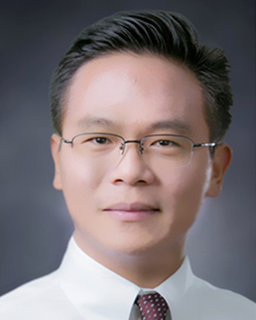Keynote Speakers: Dr. Qiwei Zhan

Dr. Qiwei Zhan
Professor, Zhejiang University
Title:
Multiphysics EDA: Advanced Computing beyond Simulation
Biography:
Qiwei Zhan received the B.S. degree in geophysics from the University of Science and Technology of China, Hefei, China, in 2013, and the M.S. degree in civil and environmental engineering (minor) and the Ph.D. degree in electrical and computer engineering from Duke University, Durham, NC, USA, in 2016 and 2019, respectively. From June 2019 to August 2020, he was a Peter O’Donnell Jr. Postdoctoral Fellow with the Oden Institute for Computational Engineering and Sciences, The University of Texas at Austin, Austin, TX, USA. Since September 2020, he has been a Tenure-Track Professor and a Ph.D. Supervisor with the College of Information Science and Electronic Engineering, Zhejiang University, Hangzhou, China. His research interests include multiphysics modeling, high-performance computing, uncertainty quantification, inverse problems, and scientific machine learning.
Abstract:
When discussing multiphysics modeling, the finite element method is one of the most widely used algorithms. However, especially for complex systems, there remains a significant gap between real-world requirements and current simulation capabilities. This challenge arises mainly due to extreme problem scales, unavoidable uncertainties, and prolonged simulation times.
Moreover, with IC design having entered the post-Moore’s Law era, 3D chip integration has emerged as one of the most promising technologies. Yet, an effective EDA tool that incorporates coupled electromagnetic, thermodynamic, and fluid effects is still lacking.
These challenges motivate us to develop multiphysics EDA software, by integrating recent advances in computational methods and going beyond conventional FEM simulation. To be more specific, this talk will present interdisciplinary efforts, toward the systematic integration of CAD (mesh generation), CAE (unified discontinuous Galerkin methods), and CAM (data learning), empowered by the high-performance computing technology.
Moreover, with IC design having entered the post-Moore’s Law era, 3D chip integration has emerged as one of the most promising technologies. Yet, an effective EDA tool that incorporates coupled electromagnetic, thermodynamic, and fluid effects is still lacking.
These challenges motivate us to develop multiphysics EDA software, by integrating recent advances in computational methods and going beyond conventional FEM simulation. To be more specific, this talk will present interdisciplinary efforts, toward the systematic integration of CAD (mesh generation), CAE (unified discontinuous Galerkin methods), and CAM (data learning), empowered by the high-performance computing technology.